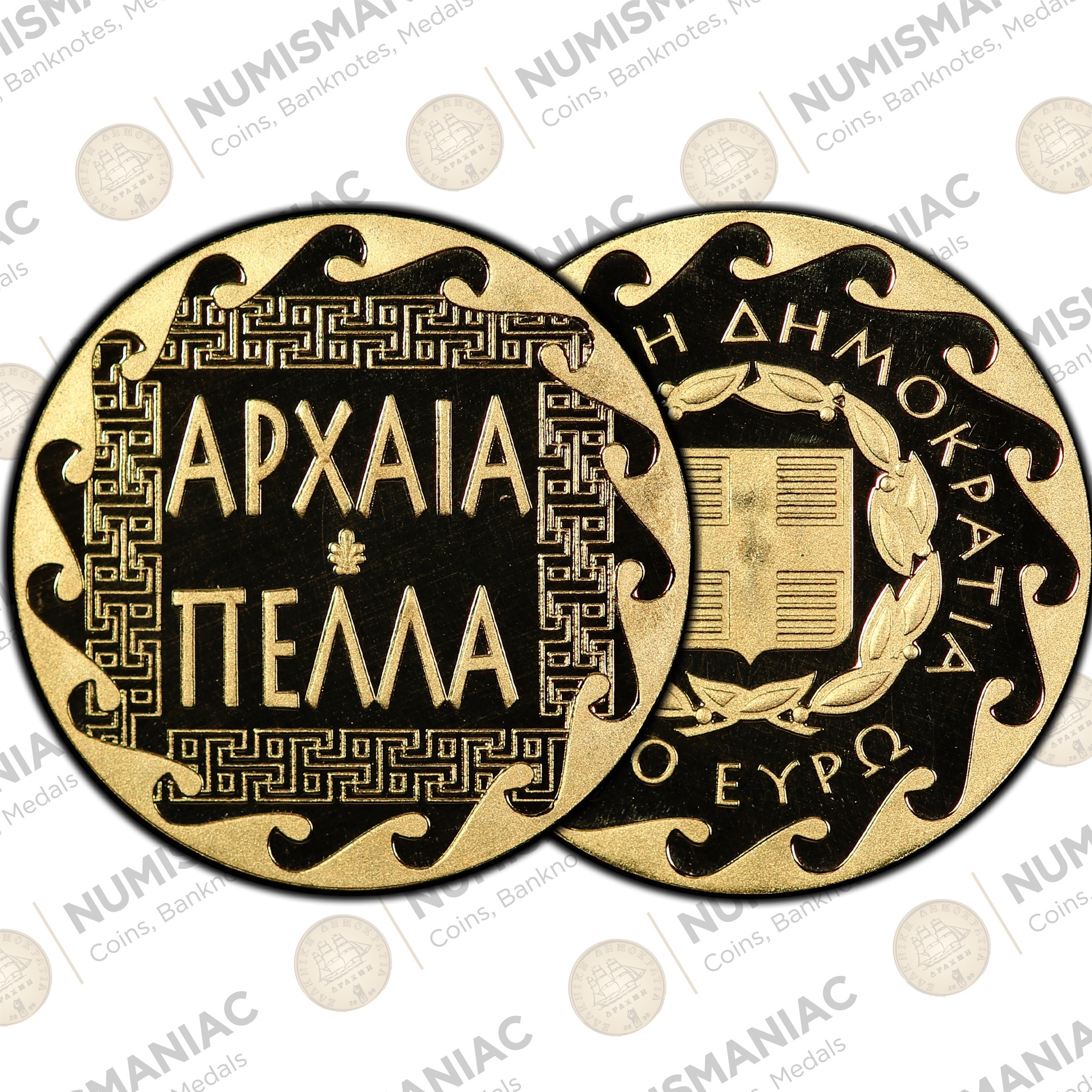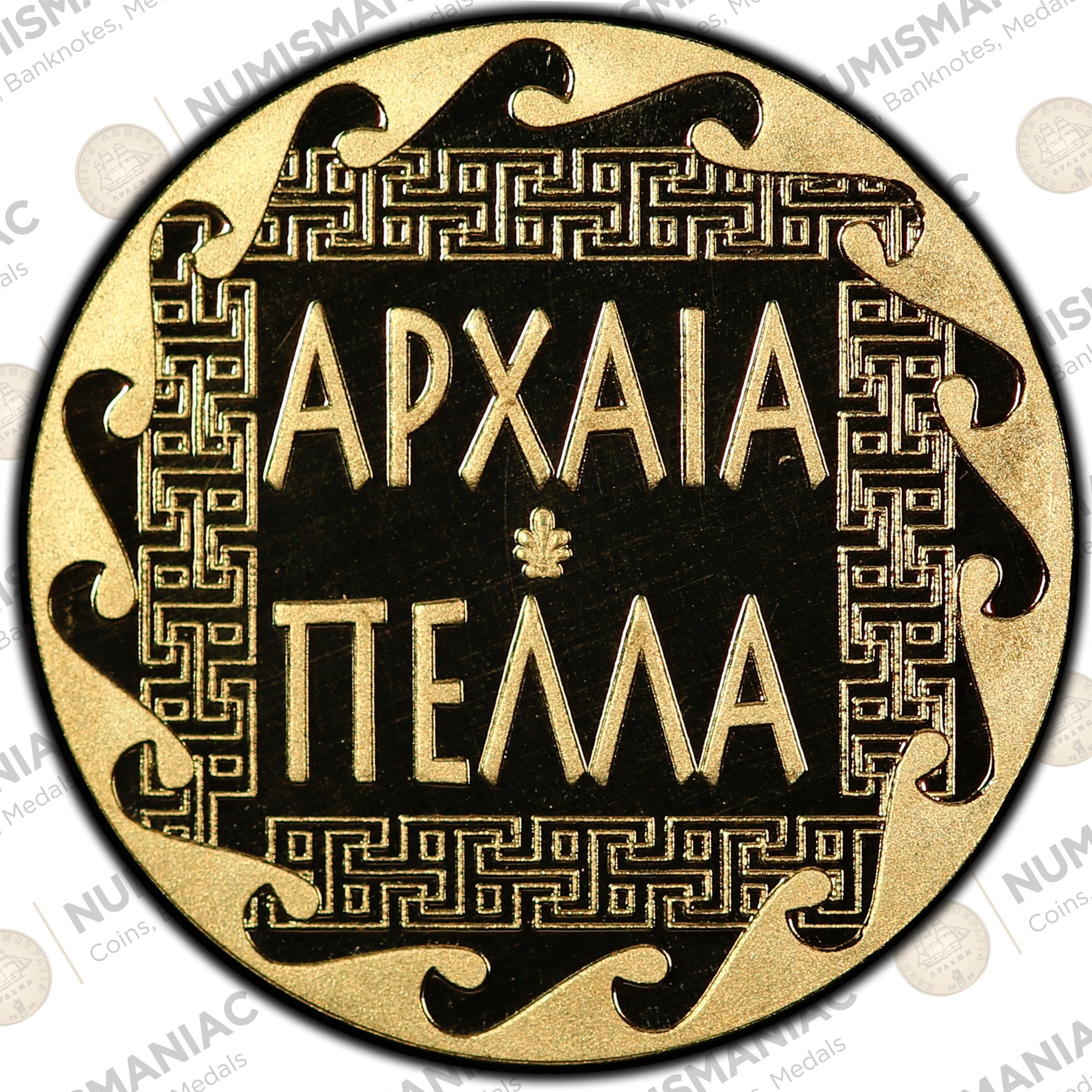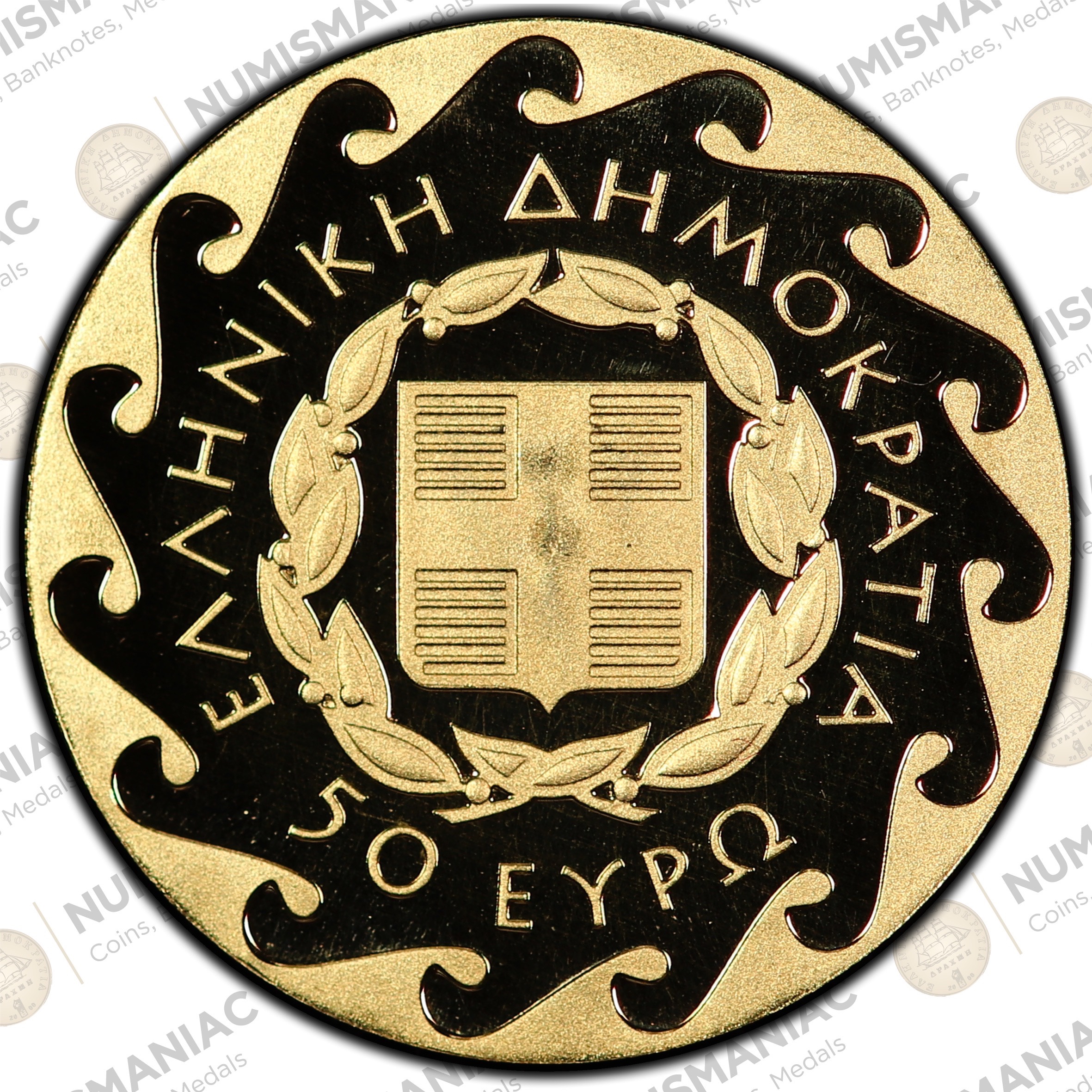Pella supplanted Aigai as the capital of the Macedonian state at the turn of the 5th and 4th centuries BC and soon evolved into a major political, economic and cultural centre in Greece. The birthplace of Alexander the Great, Pella reached its peak during the Hellenistic period. The rich archaeological finds, notably the palace complex, temples and sumptuous private houses, provide a
wealth of information about the city’s layout, architecture and economic life. The mosaic floors and the wall-paintings, rare surviving samples of ancient Greek painting, attest to the prosperity of the city and its inhabitants. Pella fell to the Romans in 168/167 BC and
began to lose importance once the seat of the Roman province of Macedonia, created in 148 BC, was transferred to Thessaloniki. Pella was destroyed by an earthquake, most probably in the early 1st century BC.
The obverse of the coin features decorative elements (a wave and a geometric motif) from a stone tabletop found at the shrine in the so-called house of Poseidon, Pella, Hellenistic period.
The reverse features the coat of arms of the Hellenic Republic encircled in a decorative wave motif, from a stone tabletop found
at the shrine in the so-called house of Poseidon, Pella, Hellenistic period.
Issue limit: 4,000 Coins




Reviews
There are no reviews yet.